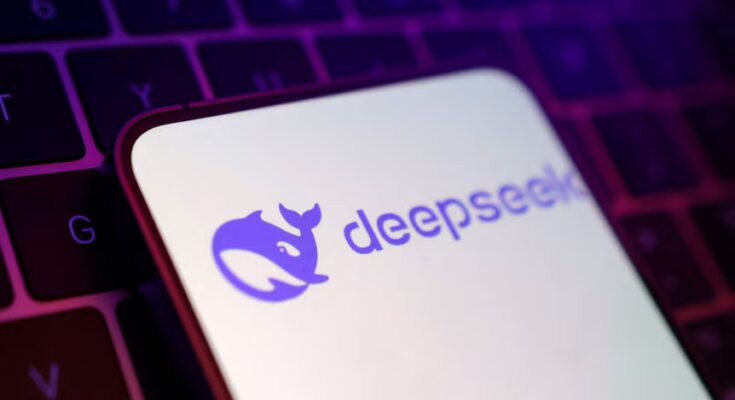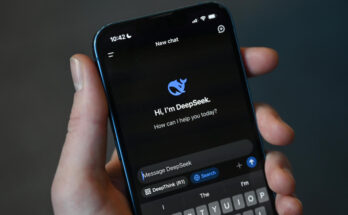China’s DeepSeek AI model is transforming its AI capabilities, posing significant threats to cyberattacks and data privacy. This model is revolutionizing China’s cyberespionage, cyberwarfare, and information operations.
DeepSeek’s advanced AI architecture, utilizing vast datasets and advanced processing, is ideal for offensive cybersecurity operations, large-scale information exploitation, military simulations, geopolitical analysis, and real-time decision-making in complex, dynamic environments.
Liang Wenfeng, co-founder of High-Flyer, developed DeepSeek using China’s vast datasets, efficiency optimization, innovation culture, state support, and open-source practices. This strategy offers unique advantages to China’s AI ecosystem, highlighting the challenges faced by U.S. companies in global competition.
Wenfeng’s close ties to the Chinese Communist Party may have allowed access to CCP espionage, targeting U.S. AI startups and tech giants to acquire algorithms, source code, and proprietary data, as part of China’s global AI leadership push.
High-profile US criminal cases highlight AI theft, particularly in strategic industries like autonomous vehicles, facial recognition, cybersecurity, and advanced robotics, as AI becomes a prized commodity in corporate espionage investigations.
Apple’s self-driving car project has been accused of stealing autonomous vehicle technology, with a Chinese-born engineer accused of downloading proprietary data before relocating to a competitor. Another Apple employee was charged with smuggling similar information out of the country, highlighting the vulnerability of AI research to insider threats.
DeepSeek’s AI models have raised concerns about the hardware used, especially in light of U.S. export restrictions on high-performance chips to China. Despite these limitations, DeepSeek has made significant advancements, raising questions about the effectiveness of sanctions and how Chinese AI firms circumvent them, potentially diminishing their intended impact.
DeepSeek is a powerful tool for identifying vulnerabilities in complex systems by processing and analyzing massive datasets in real-time. It can automate the process of identifying weak points in networks, software, or infrastructure, reducing the time and resources needed for sophisticated cyberattacks.
DeepSeek’s role in zero-day exploit discovery is concerning, as it can analyze vast software code and infrastructure configurations faster than human teams or AI systems. These exploits could be used in targeted attacks on critical U.S. infrastructure, causing widespread disruption. A security flaw in DeepSeek, which has been patched, could allow a malicious actor to swiftly access a victim’s account, including session cookies and other data linked to the chat.deepseek[.]com domain.
DeepSeek is a unique threat in advanced persistent threats (APTs), which involve long-term cyber-espionage campaigns often attributed to state actors. It can sift through encrypted or obfuscated data, correlating seemingly unrelated information to uncover sensitive intelligence, such as classified government communications or high-ranking officials’ personal data.
DeepSeek’s generative capabilities pose a threat to social engineering and misinformation, as it can create realistic phishing emails tailored to individuals using breached datasets. This could bypass detection systems and manipulate individuals into revealing sensitive information, especially with the growing use of AI in synthetic identities.
DeepSeek, an AI model, could aid disinformation campaigns targeting U.S. institutions by analyzing social media and news cycles. This could exacerbate societal polarization and make campaigns more effective. China’s surveillance infrastructure and relaxed data privacy laws provide an advantage in training AI models like DeepSeek.
DeepSeek’s vast dataset processing capabilities could lead to extensive profiles of individuals, corporations, and governments, potentially exposing sensitive information to cyberattacks. This could enhance DeepSeek’s ability to predict human behavior and model vulnerabilities.
DeepSeek’s use in cyber-surveillance campaigns raises ethical and privacy concerns due to its ability to analyze encrypted data streams and correlate disparate datasets, potentially de-anonymizing anonymized data, revealing individual identities and activities, and potentially exposing sensitive information.
DeepSeek’s implications extend beyond the US and global data governance norms. China’s normalization of AI for mass data exploitation could pressure other nations to adopt similar practices, undermining international data privacy standards. China’s Belt and Road Initiative, which exports AI capabilities, often comes with data-sharing agreements, expanding its global data ecosystem.
DeepSeek poses a significant threat to cybersecurity and privacy, potentially reshaping global norms around data privacy and security. If left unchecked, it could elevate China’s cyber capabilities and redefine global norms. The U.S. must prioritize AI-driven cybersecurity measures and collaborate with allies to establish international norms to mitigate these risks.



